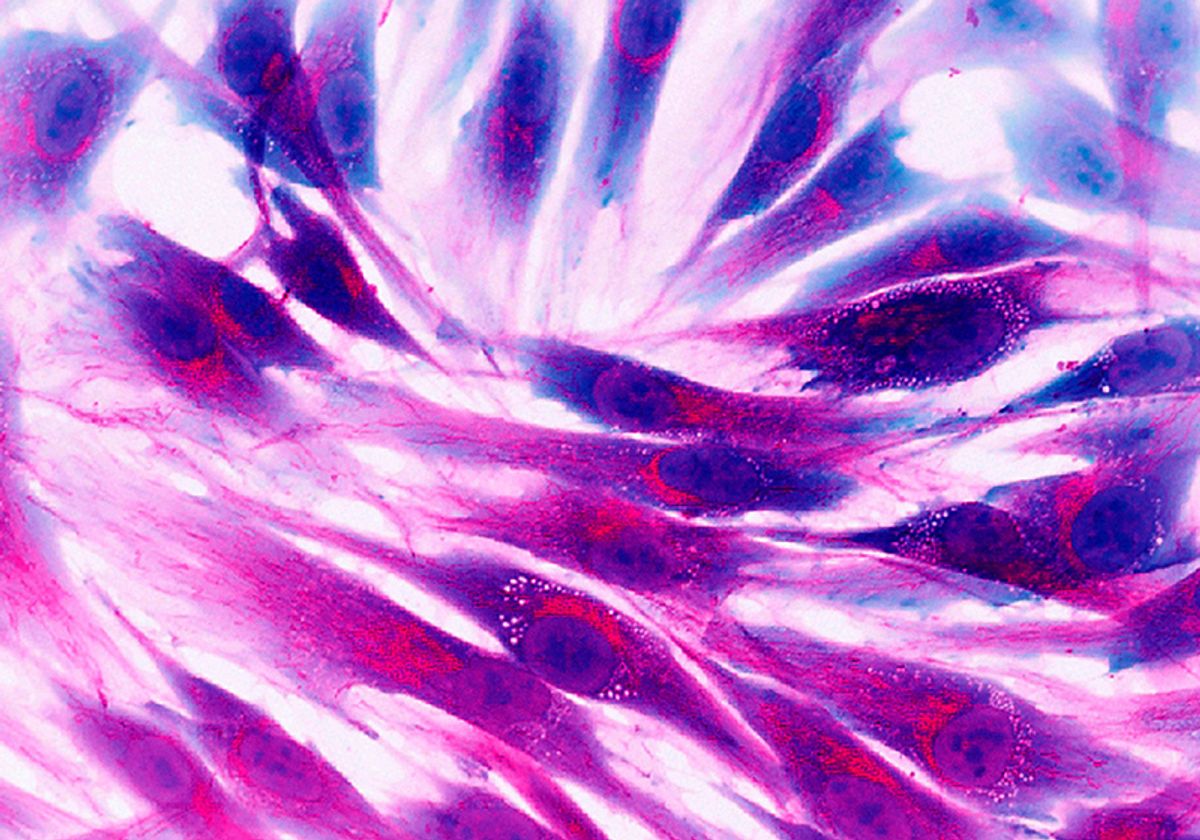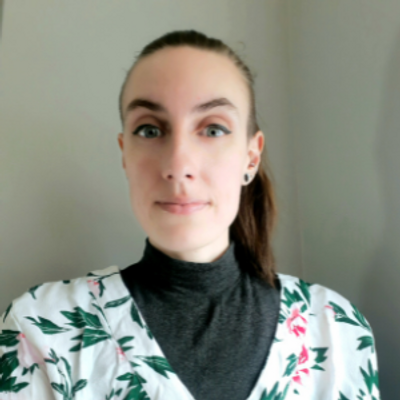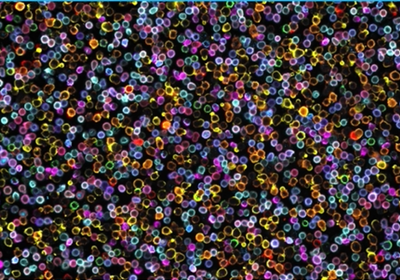
Wound healing is a response to tissue damage that relies on a complex series of signaling events. Cells such as mesenchymal stem cells (MSCs), keratinocytes, and fibroblasts orchestrate the molecular processes involved in closing and repairing wounded tissue, preventing infections and vulnerability to further damage. Researchers are interested in potential therapeutic applications of MSCs for wound healing, due to their regenerative capabilities and secretion of signaling molecules that regulate other tissue-repairing cells.1-3
In addition to different cell types, the tissue microenvironment plays an important role in wound healing. It provides a range of mechanical cues that affect cellular differentiation, viability, and aging. Replicating the mechanical properties of the tissue environment poses a challenge to studying wound healing in conventional 2D cell culture. Cells grown in a dish are often exposed to unnaturally stiff culture substrate, over-crowding, and continuous subculturing, which does not reflect the biological context of wound healing and may disrupt the cellular activities needed for tissue regeneration.3,4
Recently, scientists examining wound healing have investigated 3D engineered systems that mimic tissue, which improve the viability of stem-like cells and provide greater control of cellular differentiation in culture. In a study published in Wound Repair and Regeneration, researchers from the University of Kansas developed a 3D hydrogel system that resembles fatty tissue to better characterize the substrate effects on adipose-derived mesenchymal stem cells (ASCs).5 The hydrogel system acted as a porous 3D culture substrate with similar stiffness to adipose tissue, which enabled the scientists to examine how the mechanical environment affects ASC aging, stem-like properties, and regenerative molecule secretion.
The researchers cultured ASCs derived from a patient using both a conventional 2D system and their 3D hydrogel. Compared to ASCs grown in 2D culture, those grown in the 3D hydrogel system showed less evidence of cellular aging and higher expression of stemness markers. Because of the porous structure of this model, the researchers were also able to collect and assess ASC-secreted molecules in the conditioned culture media. ASCs in the 3D system displayed increased protein, antioxidant, and extracellular vesicle (EV) secretion. Additionally, when the scientists applied the conditioned media to cells in 2D culture, they observed that keratinocytes and fibroblasts had increased metabolic, proliferative, and migratory activity. The conditioned media from 2D ASC cultures also increased the tissue regeneration functions of these cells, but the researchers noted that 3D culture conditioned media enhanced this effect.
If it is a simpler protocol, a simpler procedure to obtain a greater number of stem cells…then that's a good contribution.
- Dr. Kacey Marra, University of Pittsburgh
These findings are in line with previous research showing that 3D systems can improve MSC stemness and longevity. For example, scientists have grown spheroid and organoid cultures in large-scale bioreactors to demonstrate how 3D systems enhance MSC viability and stem-like properties.6,7 The hydrogel structure in this study overcomes some limitations of other 3D systems with its porous architecture, which allowed cells to migrate and proliferate within the hydrogel and enabled the researchers to easily collect molecules secreted by ASCs. The simplicity of the system also provides an alternative to current complex culture methods. “It’s a simpler 3D culture compared to spheroids…and simpler than the complicated bioreactors that groups such as myself have used in the past,” said Kacey Marra, a professor of plastic surgery and bioengineering at the University of Pittsburgh who was not involved in the study. “If it is a simpler protocol, a simpler procedure to obtain a greater number of stem cells and hence greater number of [extracellular vesicles], then that's a good contribution.”
There are many future avenues for this proof-of-concept study, including deeper investigation of the extracellular vesicles that the researchers captured from their system, and expanding this model beyond more than one ASC donor source to examine possible patient-specific effects. The researchers also hope these findings provide a template for the future design of tissue-mimetic 3D culture systems that harness the potential of MSCs in wound healing.
References
- M. Cherubino et al., “Adipose-derived stem cells for wound healing applications,” Ann Plast Surg, 66(2):210-15, 2011. doi:10.1097/SAP.0b013e3181e6d06c
- J. Luck et al., “Adipose-derived stem cells for regenerative wound healing applications: understanding the clinical and regulatory environment,” Aesthet Surg J, 40(7):784-99, 2020. doi:10.1093/asj/sjz214
- M.F. Pittenger et al., “Mesenchymal stem cell perspective: cell biology to clinical progress,” NPJ Regen Med, 4:22, 2019. doi:10.1038/s41536-019-0083-6
- B. Kuehlmann et al., “Mechanotransduction in wound healing and fibrosis,” J Clin Med, 9(5):1423, 2020. doi:10.3390/jcm9051423
- J.G. Hodge et al., “Tissue-mimetic culture enhances mesenchymal stem cell secretome capacity to improve regenerative activity of keratinocytes and fibroblasts in vitro,” Wound Repair Regen, online ahead of print, 2023. doi:10.1111/wrr.13076
- Z. Cesarz, K. Tamama, “Spheroid culture of mesenchymal stem cells,” Stem Cells Int, 2016:9176357, 2016. doi:10.1155/2016/9176357
- R. Edmondson et al., “Three-dimensional cell culture systems and their applications in drug discovery and cell-based biosensors,” Assay Drug Dev Technol, 12(4):207-18, 2014. doi:10.1089/adt.2014.573






